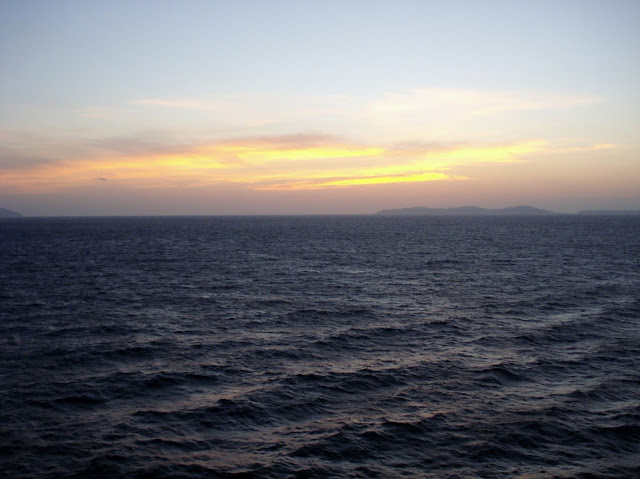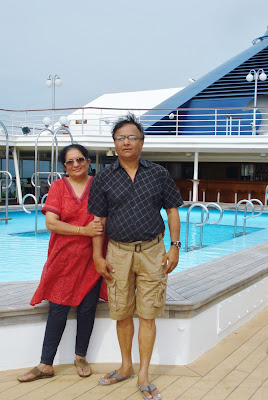In 1990, I was in a team that conceptualized a unique,
intensive programme called the Training Programme in Environment Education
(TEE), a nine-month long, residential module that covered the science and
socio-economics of Environment; Development, and Communications. I facilitated
the same at the Centre for Environment Education (CEE), Ahmedabad for 9 long
years. In August 2013, I visited one of the several development specialists that TEE hoped to produce. This inspired story is an illustration of how, unknown to
most of us, our past actions done routinely, out of duty or ’job’ years ago,
can actually have a massive impact on lives of so many today.
Preamble
The year
is 1993. Avani Mohan Singh of Jhansi is one of the 15 post-graduates from all
over India to have made it to the TEE. He
has joined the training programme to have ‘a change from the boredom’ of his
earlier, mundane job in pharma industry.
Around the
same time, the poor in the drought-prone villages of Bundlekhand region of
Madhya Pradesh were living a hopeless life. The
water was either not available or not fit for consumption. The hand pumps did
not work and the wells were dry. Men and women had to walk miles to get drinking
water. In some tribal areas, they had to literally scrap the drying streams
after walking 2 kms first; there was hardly any other activity nor was there
any time for it! Survival was priority!
As the
9-month capacity building module got going, visioning processes started to
develop in Avani’s confused mind; ideas emerged and crystallized, and soon, he
had made up his mind what to do next - with utmost clarity of detail.
Lives were about to change forever– dramatically!
Events
unfolded as if the destiny of Avani and those of the people of Bundlekhand were
entwined without the knowledge of each other. In October, 1994, Avani
registered his organization called ‘Haritika’ at Jhansi in Uttar Pradesh. And
so began the journey towards transformation.
The Story
so far…
Avani firmly believes in, and is actively
involved in promoting dignity and gender equity through poor people's social,
economic, political and human capacity building. As he went around scouting, he
found that Bundelkhand district in north Madhya Pradesh (MP) is one of the most poorly endowed
regions of the State as far as natural resources are concerned. It had a
very low agricultural productivity, characterized as it is, by hard rock with
poor top soil cover and low ground water availability. Given the largely
undulating topography of the area, the main problem faced in the project area
is the soil erosion and shortage of water for irrigation and domestic purposes.
What struck Avani the most
was the fact that the communities and populations un-served by water and
sanitation services mostly belong to socially disadvantaged groups which have
their separate hamlets usually located on the periphery of a village. Women and
girl children were generally found to be among the poorest groups in the
region, suffering the most from inadequate water supply and sanitation coverage.
After a few successful but
tough initial attempts in Rund karari, a village in Uttar Pradesh, it was in
1995 with the support of DPAP (Drought Prone Area Programme) of MP Government ,
that Haritika constructed several hundred structures such as stop dams, check
dams, tube-wells and dug wells, and storage tanks. After that Haritika worked
on Integrated Water Resource Management and focused on NRM (Natural Resource
Management) through partnerships, collaborations and networking. The activities included soil and water
conservation, and intensification/diversification of agriculture.
In 1998, Haritika spread its
activities further in Uttar Pradesh villages with support from the World Bank,
and later, it established its Head Office at Nowgaon in MP on an acre of land.
They also established several field offices including one each in Uttar Pradesh
and Rajashtan In Madhya Pradesh, Haritika
started first with engineering solutions, those that directly addressed the
basic needs of people in the 39 villages of Nowgaon block of District
Chhatarpur through its drinking water projects. Large areas of the region had
underlying hard rock formation and remain uncultivated, primarily due to
shortage of irrigation water. Haritika therefore adopted what is known as the
‘watershed approach’ for treatment of land in the project area.
 |
| Avani explaining the watershed approach |
 |
| A school block with toilets & Water storage tank |
What impresses a visitor is
the fact that Haritika has synergized funding from several sources, and used
them for different components of its model of sustainable development. This has
water at its focus with inter-linkages to renewable power generation, toilet
blocks, agriculture, horticulture and improved cropping patterns and practices.
For example, in a single village in Nowgaon block, one can see 24x7 water
supply (unheard of in cities) possible because of a stop dam, storage tank and
solar energy; toilet blocks with water supply, and three crops in a year plus
fruit bearing trees in thousands. Village committees operate and maintain the
infrastructure so created, and the communities pay for operation and
maintenance willingly. One can sense the dramatic increase in incomes and
improved quality of lives – a feeling of total security, peace and of
well-being.
 |
| At Patna tribal village: A Reservoir of Hope! |
A visit to 90 tribal
families in Patna village in Bijawar block is a lesson for intrepid
entrepreneurs in development sector. It is a region where no one would possibly
venture. The tribals were once steeped in poverty and prone to violence; their
occupation was gathering wild plants of some medicinal value; there was little
water in the drying streams. Today, they have two stop dams with huge water
storage reservoirs, a bore well, and fence-protected farms with at least two
crops plus vegetables. What more can these people ask for! And yet, Avani pursues them relentlessly, giving them ideas in an effort to create more demand
which he says Haritika can easily meet.
In summary, Haritika has
adopted a right-based approach for integrated planning and implementation of
water, sanitation and hygiene in the backward districts of Bundelkhand.
Availability of piped water supply has not only saved the time of the women
that can be gainfully utilized, but also the availability of safe drinking
water has saved many lives from diseases and disabilities caused due to
polluted water. Besides, appropriate water recharge structures like check dams
and stop dams have been erected along the water sources. Considering the
erratic power supply in many of the villages, Haritika has developed models of
solar energy operated water supply schemes. These interventions have
helped in improving the health status, and quality of life for the people in
rural Madhya Pradesh.
For its absolutely
commendable efforts, Haritika continues to receive financial support from
NABARD, Coca Cola Foundation and Rockefeller Foundation, just to name a few.
Small funding often comes from private trusts in UK and USA.
In Conclusion
The route
to transformation had its own challenges yes, but looking back, and after all
the hard work by Team Haritika, success could never have been so sweet, so
fulfilling. Over past 19 years now, Avani Mohan Singh and his Team, have
entrenched themselves in the hearts of grateful villagers and tribals in
Bundelkhand.
Recollects Avani, “The 9 months spent in Ahmedabad were incredibly full of practical lessons. We
learnt something that we did not learn in the 9 years of formal education. That
inspired me.” It was never easy though. “I must acknowledge the cooperation of
fraternity of the Indian Administrative Services of Madhya Pradesh who extended
their support and cooperation during the tough, initiation phase”, he adds
gratefully.
Recognition has come in the
form of ‘World Water Prize’ from the Japan Water Forum, and FICCI (India) NGO
Awards. However, one can easily discern a sense of restlessness in this once
calm, quiet person. He knows that as an NGO, he has just entered an equivalent
of adolescence. Adulthood will surely follow as nothing spurs like success
tasted. Haritika, with its pioneering efforts, will surely make the difference
to enhanced quality of life as their model continues to replicate itself among
the poor of Bundelkhand.
What a visitor learns is simple. Dreams do come true but only if one envisions
goals, and then, honestly puts in dedicated hard labour to achieve them.
Haritika is a modern-day proof of that maxim!






























































































